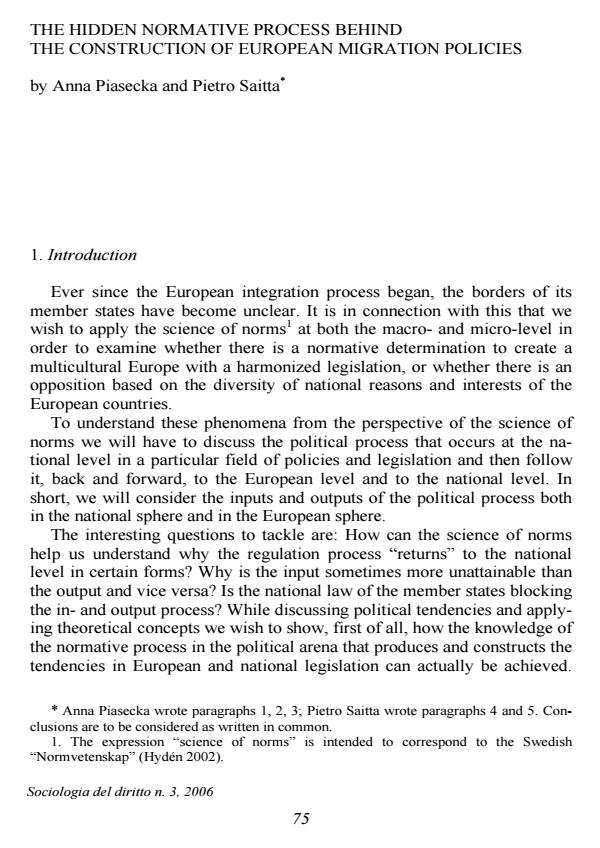The hidden normative process behind the construction of European migration policies
Journal title SOCIOLOGIA DEL DIRITTO
Author/s Pietro Saitta, Anna Piasecka
Publishing Year 2007 Issue 2006/3
Language English Pages 23 P. 75-97 File size 105 KB
DOI
DOI is like a bar code for intellectual property: to have more infomation
click here
Below, you can see the article first page
If you want to buy this article in PDF format, you can do it, following the instructions to buy download credits

FrancoAngeli is member of Publishers International Linking Association, Inc (PILA), a not-for-profit association which run the CrossRef service enabling links to and from online scholarly content.
<i> The Hidden Normative Process Behind the Construction of European Migration Policies</i> (di Anna Piasecka, Pietro Saitta) - ABSTRACT: This paper examines how legal science can provide a new perspective and instrument of analysis for understanding how action is produced by legal rules in a given system. By treating legal rules as a factor of explanation in perceiving political action, the authors aim to use them as a scientific perspective that will reflect whether there is a normative determination to generate harmonised legislation with regard to immigration and a multicultural society in Europe, or whether there is opposition based on various different national reasons and interests in EU member states. Tools s provided by the science or norms, as defined by the Swedish scholar H. Hydén, are applied to observe immigration policies, both at the supranational (European) level and the national (Italian) level. The results suggest that there is a process of disarticulation of these policies in the heterogeneous position typical of the European Union, which noticeably shows a lack of will to co-ordinate the actions of individual member states and induce them to share common visions on the question.
Pietro Saitta, Anna Piasecka, The hidden normative process behind the construction of European migration policies in "SOCIOLOGIA DEL DIRITTO " 3/2006, pp 75-97, DOI: